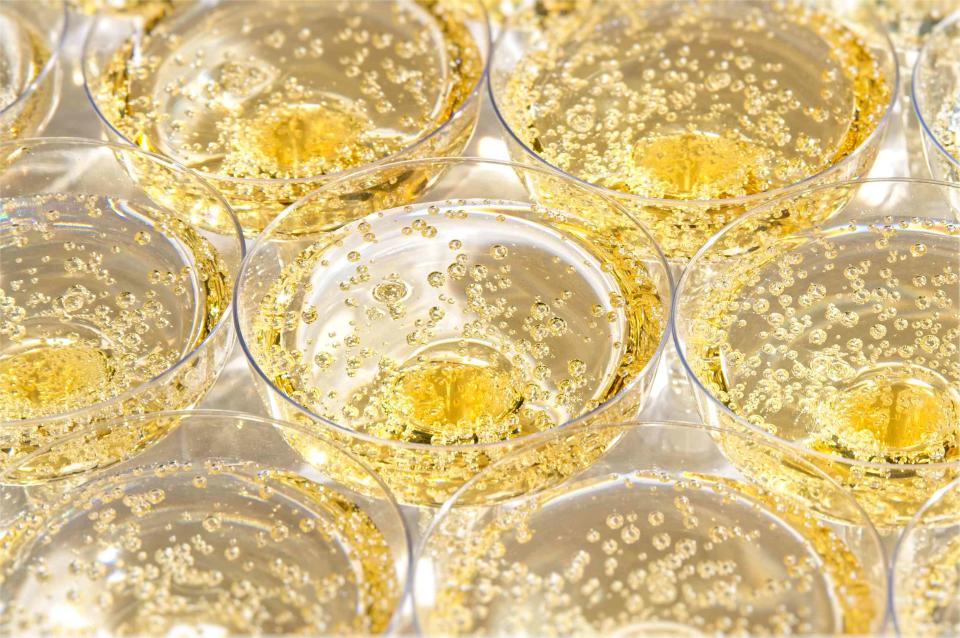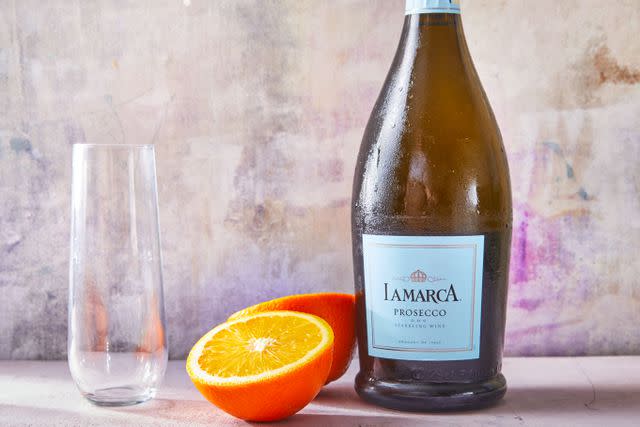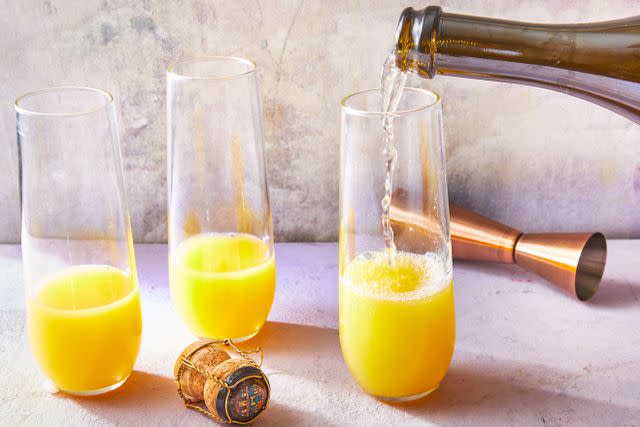Prosecco Vs. Champagne: What's The Difference?
And the real question: Why does Champagne cost so much more?

Juan Camilo Bernal/Getty Images
Nothing says, "Let’s celebrate!" more than popping open a bottle of sparkling wine for a toast, but a quick trip to the store might leave you with more questions than answers.
Prosecco and Champagne are top contenders when it comes to a festive happy hour, milestone celebration, or festive brunch – but can the two be used interchangeably? Is there even a difference when comparing prosecco vs. Champagne?
The short answer, according to Sarah Malik, a sommelier and associate professor at Johnson & Wales University’s Charlotte campus, is that sparkling wine can only be called Champagne when it originates from the Champagne region in northeast France, but the differences run much deeper.
Meet Our Expert
Sarah Malik is an Associate Professor, Johnson & Wales University, Charlotte Campus
Prosecco Vs. Champagne: What's the Difference?
In order to understand how and why prosecco and Champagne differ, it’s important to grasp what exactly they are individually.
What Is Prosecco?
Prosecco is a sparkling white wine from the Northeastern part of Italy. Prosecco is generally dry or off dry with moderate levels of alcohol. It has relatively simple aromas and flavors, which allow additions like orange juice or crème de cassis to make a sparkling wine cocktail.
"It is made using Glera grapes with an addition of a small percentage of pinot nero to make the rose style," Malik says. "It can be made still—tranquilo—or slightly sparkling."
Today, prosecco is made by the tank method, which allows a second fermentation, creating a little more alcohol and carbon dioxide.
"Interestingly, these wines have always been slightly fizzy due to the fact the Glera grape is late ripening and fermentation extends well into fall and often unfinished when the cold weather arrives. With the arrival of the warmer weather in spring, the fermentation is resuscitated within the sealed bottle, creating CO2," Malik says.

Caitlin Bensel; Food Styling: Torie Cox
What Is Champagne?
Champagne is a style of wine that originates from the Champagne region in the northeast part of France.
"It is a more complex wine than prosecco, because the yeast is left in contact with the wine for long periods of time unlike prosecco," Malik explains. "The contact with the yeast that can last years, creates flavors and aromas of brioche and toast."
Champagne is made using three different grapes—Chardonnay, Pinot Noir, and Meunier. Most Champagne is non-vintage, because it is a blended wine made from different vintages that have been held in reserve.
"A little bit more special vintage wines come from exceptional years, and some of the prestige cuvée Champagnes come from the best vineyards, which are referred to as the Grand Cru," Malik says. "You can buy Champagne that is just made from Chardonnay, which is referred to as blanc de blanc or the black grapes which are referred to as blanc de noirs. You can also buy rosé Champagne, which is especially popular around Valentine's Day."
Can Champagne And Prosecco Be Used Interchangeably?
Malik says the two wines can be used interchangeably, but the price point can be considerably different.
"A very good prosecco can be purchased (for) around $20, whereas a more notable Champagne could exceed $50," she says.
A good rule of thumb, according to Malik, is to consider group size and how the wine will be consumed.
"Prosecco is wonderful for celebrations of large groups of people when price is a consideration. It is an excellent brunch beverage with the addition of orange juice to create a mimosa,” she says. "For something a little bit more special, Champagne is a wonderful alternative but should be served by itself, without the addition of other beverages to appreciate the complexity of the years that it has been aged in the cellars."
Is Prosecco a Cheap Champagne?
While both wines are sparkling and can be used for celebrations, Malik says that are "completely different" when it comes to just about everything else.
"I do not think prosecco is a cheap Champagne,” Malik says. "It is a completely different style of wine due to the fact it is made in a stainless-steel tank with a short contact time with yeast. The aroma and flavor of the grapes are prevalent, whereas Champagne, having yeast added directly to the bottle, and stored in the cellars for several years, creates a more complex wine."

Caitlin Bensel; Food Styling: Torie Cox
Which Is Drier?
Malik says Champagne is drier than prosecco.
"The term brut is used on the label, which indicates the wine has no noticeable sugar," Malik explains. "Prosecco can often have a slight sense of sweetness, which is often referred to as off-dry."
Tips For Enjoying Sparkling Wine
Malik tells Southern Living there are a few tips she recommends you follow for enjoying sparkling wine:
When purchasing prosecco look for the different levels of quality: "Some are made at better sites and have a little more complexity. The two villages Conegliano and Valdobbiadenne—which will be on the label—will have more floral aromas and notes of stone fruit," Malik says.
The cheaper, more affordable proseccos have the quality designation of DOC: "This is a good choice for mimosas," Malik says.
A flute is the best glass option (tulip-shaped) to keep the aromas in the glass.
Do not swirl sparkling wine and do not fill the glass as the bubbles will disappear: "Warm hands can make wine flat," she says.
Chill both wines in the fridge before service.
The cage on the cork must be turned six times.
Hold the cork and turn the bottle.
Related: How To Open A Bottle Of Wine Without A Corkscrew
For more Southern Living news, make sure to sign up for our newsletter!
Read the original article on Southern Living.

